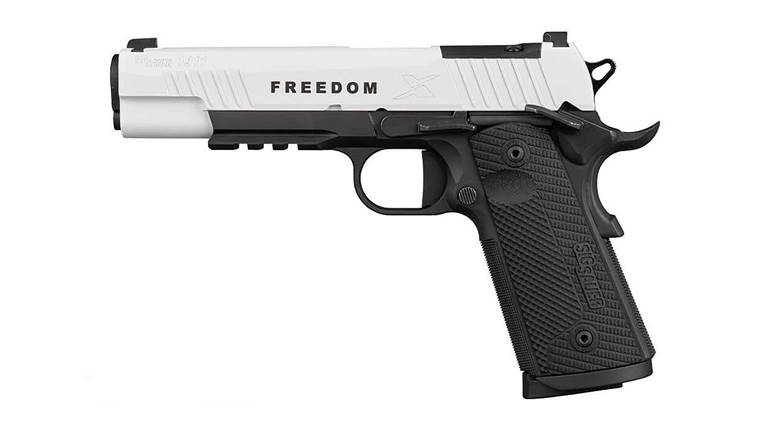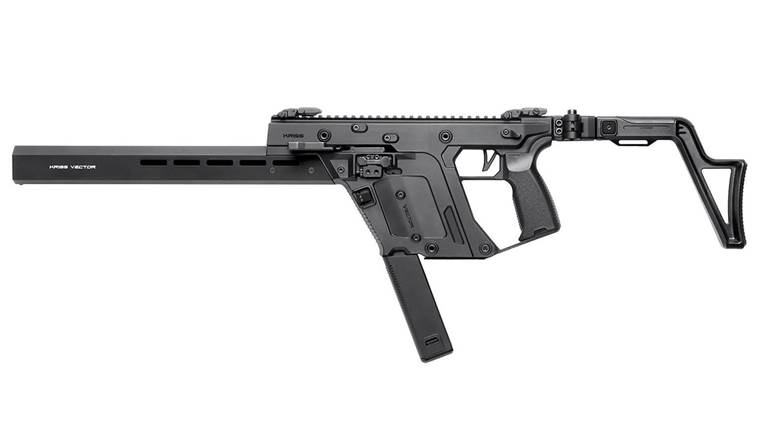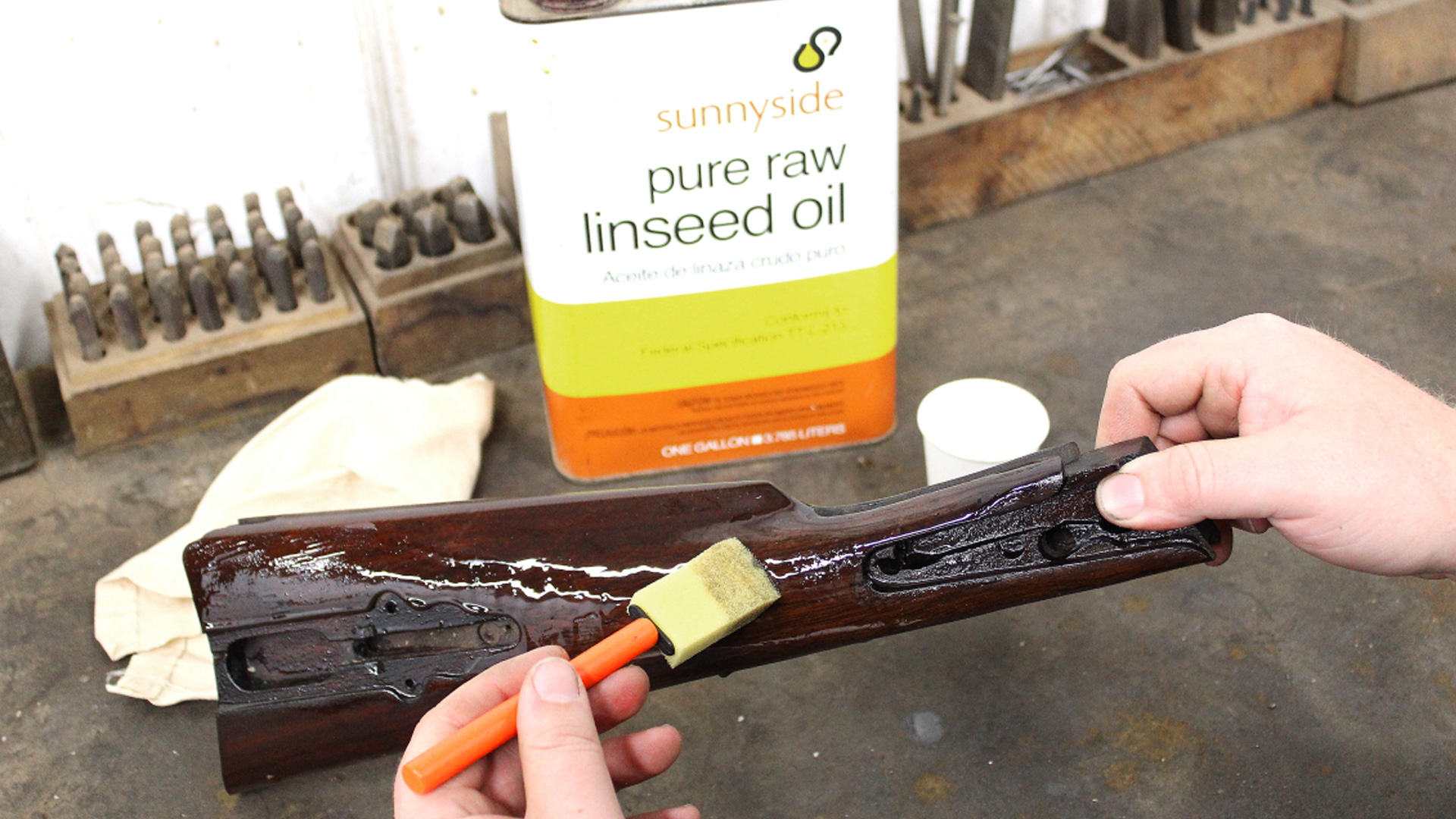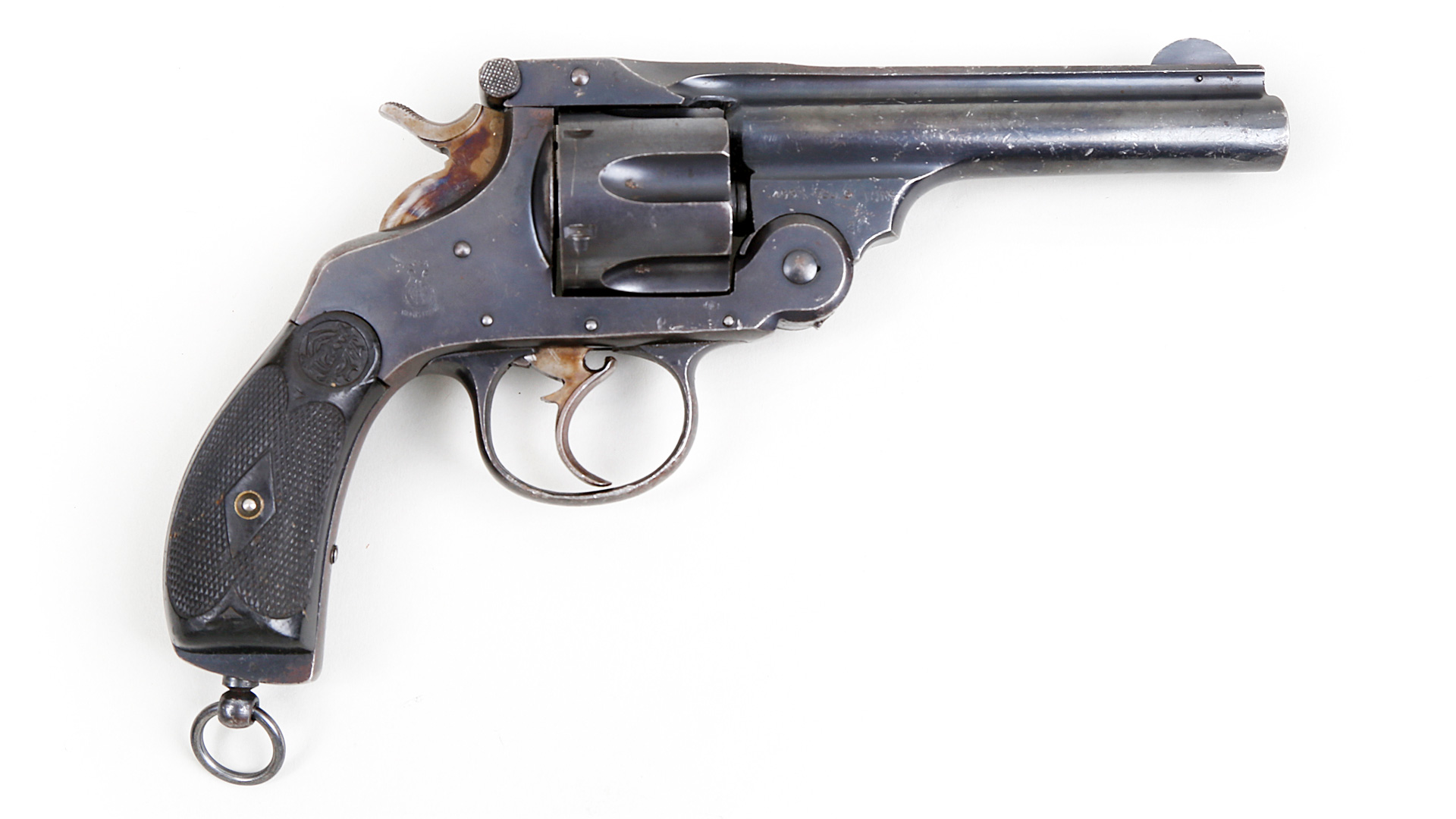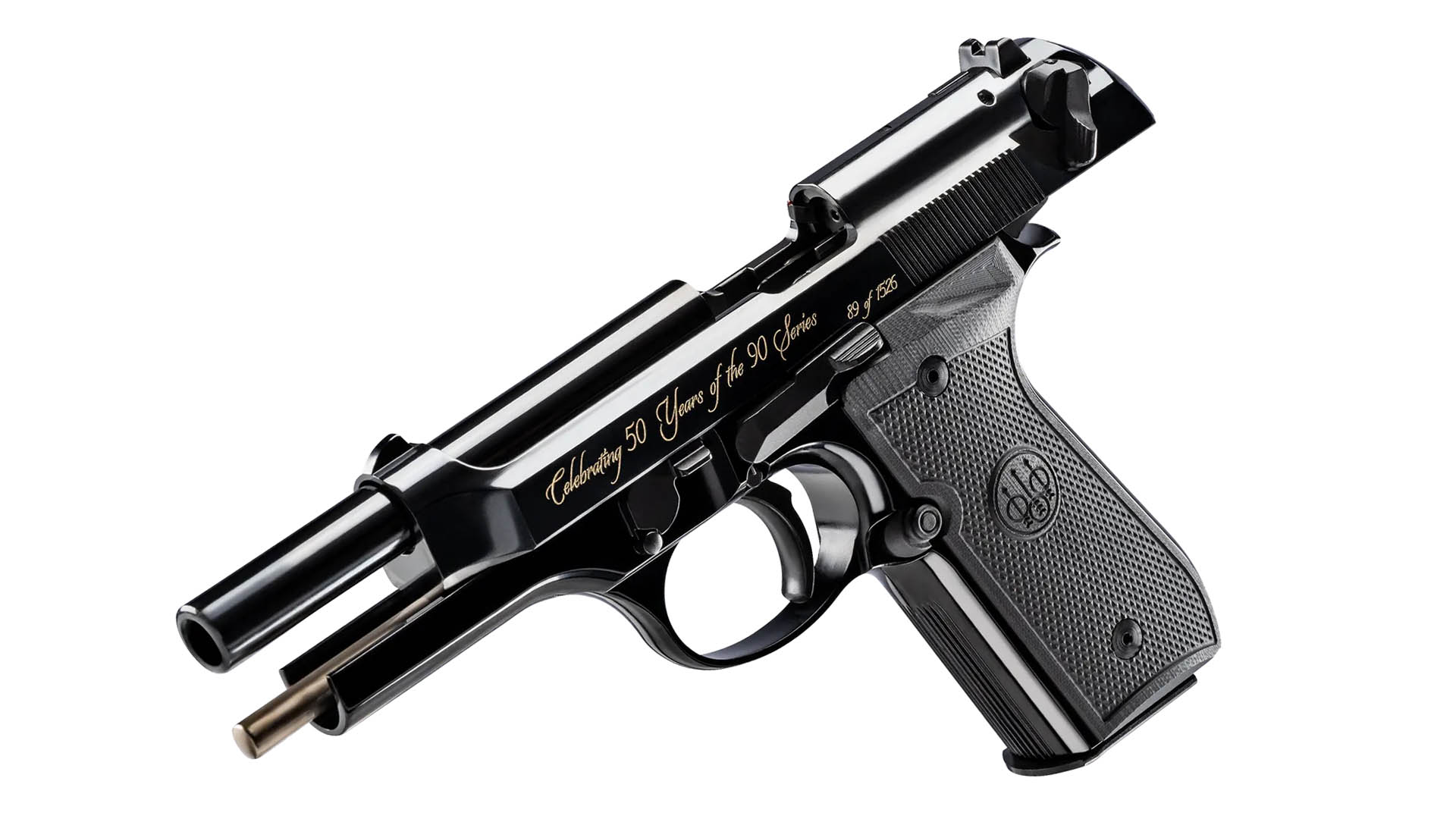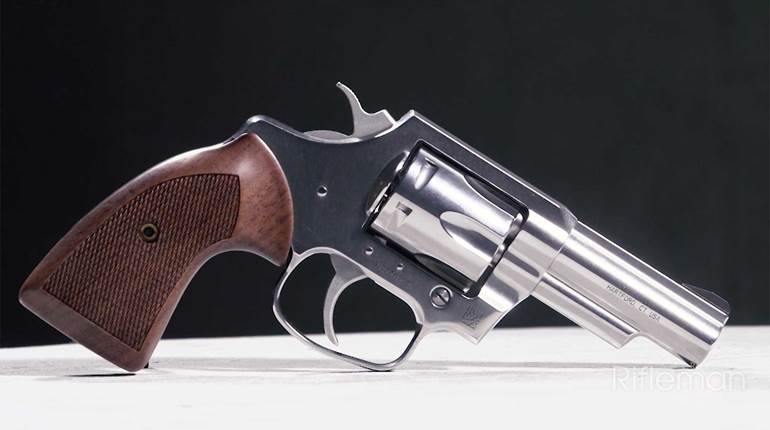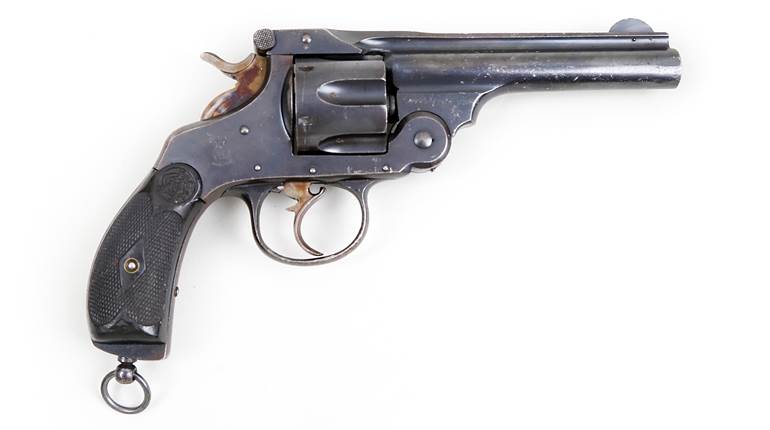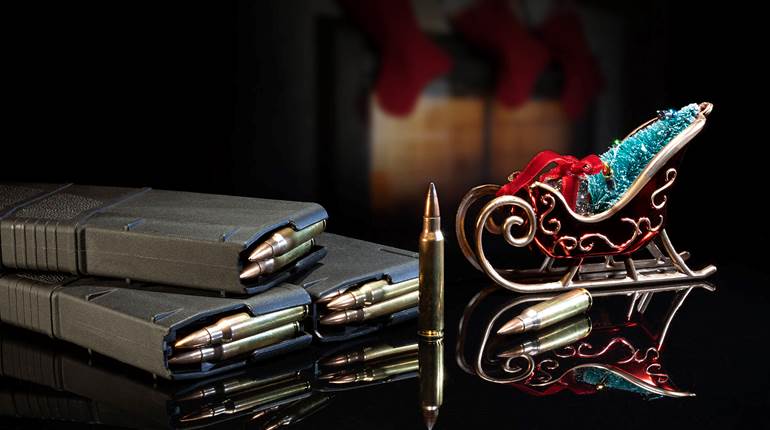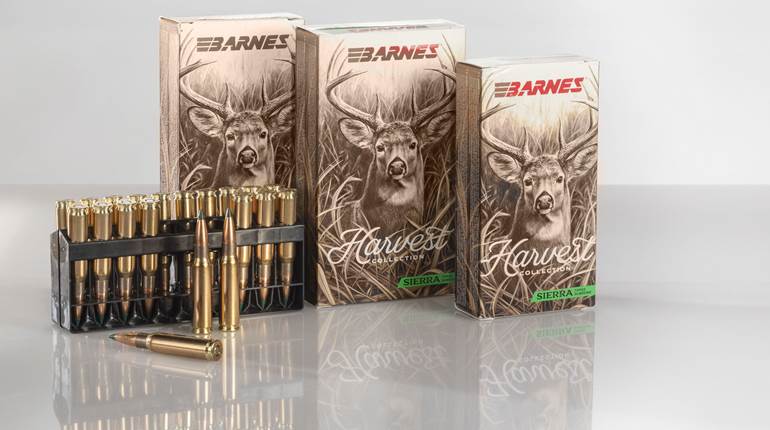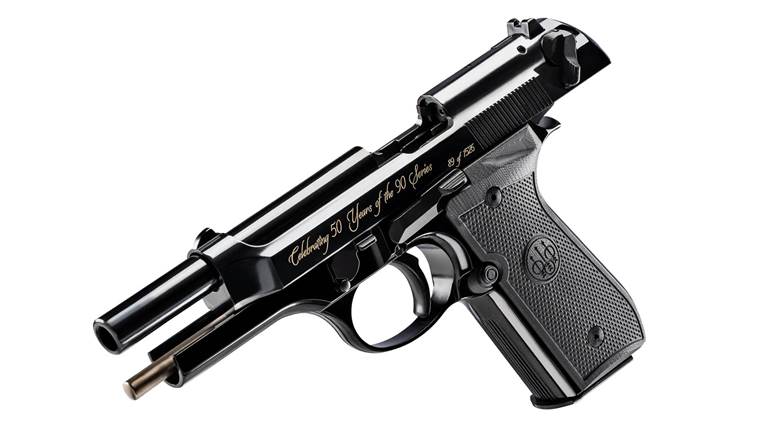
When SIG Sauer introduced its SIG556 carbine two years ago, many American shooters were excited by the prospect of a U.S.-manufactured, semi-automatic version of Switzerland's heralded SIG SG550. The SIG556 resembled the SG551 LB, a carbine variant of the SG550 designed to accept a bayonet. While the SIG556 featured elements of its Swiss counterpart-such as a full-length gas piston system, pressed-steel upper receiver and similar overall configuration-it differed in some significant ways.
The SIG556 lower receiver is manufactured from 7075-T6 forged-aluminum alloy rather than pressed steel like its Swiss sibling, reducing overall weight by about a pound. It also readily accepts M16 magazines, features a redesigned fore-end system with built-in Picatinny rail strips and an AR-15-style collapsible stock assembly, making the Americanized SIG556 look quite different from its Swiss cousin. U.S. shooters certainly took notice, and not all of them thought these modifications were for the better.
SIG Sauer, the U.S. subsidiary of SIG Arms, quickly realized there was a market for a version styled more closely like its Swiss inspiration. In response, the company developed a new variant of the carbine dubbed the SIG556 Classic with sights, fore-end and a stock assembly akin to the original Swiss offering.
The triangular-shaped synthetic stock of the SIG556 Classic is patterned much like that of its Swiss siblings and is adjustable for length of pull over three settings. Adjustments are accomplished through squeezing the integral lever located on the bottom portion of the stock. In addition, the stock can fold alongside the receiver with a push of a half-moon-shaped release on the forward left side of the stock where it attaches to the receiver. To retain it in its folded position, the stock has a latch that interfaces with a protrusion on the rear right side of the Classic's fore-end.
For further flexibility, three interchangeable internal plates included with the stock allow a shooter to adjust it to preset lengths or leave it fully adjustable. Also, a secondary buttpad adding an extra inch of length is included.
The synthetic, two-piece fore-end system of the Classic is also similar to the SG551 LB with its streamlined shape and molded ribs. It comes drilled and tapped to accept three optional strips of polymer Picatinny rail at the 3, 6 and 9 o'clock positions. Two rows of cooling vents-located on the top of the upper handguard and on the bottom of the lower handguard-help dissipate heat.
Unlike the open-post front sight of the standard SIG556, the Classic features a heavy-duty hooded front sight unit like found on the Swiss 550 series. The Classic's upper receiver shares the SIG556's strip of Picatinny rail and built-in, folding backup sight. SIG Sauer offers an optional, heavy-duty steel diopter rear sight that attaches to the Picatinny rail.
Controls of the SIG556 Classic are simple and straightforward, with the rifle sporting an ambidextrous safety lever located above its ribbed synthetic pistol-grip assembly. An AR-15-style magazine-release button is located forward of the trigger guard, and a bolt-release lever is situated on the opposite side of the lower receiver. A reciprocating charging handle extends out of the bolt carrier assembly through the ejection port.
Operationally, the SIG556 Classic is a gas-operated, rotating-bolt carbine with a two-position gas system driven by a piston, as with the standard SIG556. The setting of the gas system can be adjusted by twisting the gas valve located on the forward face of the front-sight base assembly. When the rib is vertical, the rifle is set on the "standard" setting; when it is rotated 45 degrees, it is on the "emergency" setting that allows more gas through.
The cold-hammer-forged, 17-inch barrel of the Classic ends in a birdcage-style flash hider and features a slim profile. The rifling's rate of twist is 1:7 inches, making it suitable for stabilizing a wide range of even the heaviest .223 Rem. loads.
As received for testing, the Classic came with a SIG Sauer-branded 1X red-dot sight and one of the company's polymer 30-round magazines. An interesting characteristic of the SIG556's magazines is they can be attached together with a synthetic coupler. The company also included the optional diopter rear sight assembly with the carbine.
For accuracy testing, I headed out to the range with a selection of Black Hills, Federal and Winchester .223 Rem. ammunition. During firing, the accuracy of the Classic proved to be quite good. I did note a tendency for barrel heat to affect accuracy. The red-dot sight and the diopter rear sight unit worked well, with the iron sights co-witnessing nicely with the electronic sight.
Over the course of a few hundred rounds, there was not a single malfunction. I also noted the Classic had one of the softest perceived-recoil impulses I have experienced with a .223 Rem. rifle, with it being a gentle wave rather than a sharp spike.
Avoid the severe sticker stock of purchasing an original, pre-ban SG550. For shooters who don't mind owning a close copy of the Swiss classic, the new SIG Sauer SIG556 Classic should make a terrific addition to their collections.
Manufacturer: SIG Sauer, (603) 772-2303, Sigsauer.com
Caliber: 5.56x45 mm
Action Type: Gas-operated semi automatic
Receiver: Stamped steel upper; forged aluminum lower
Barrel Length: 17 inches
Rifling: 6 grooves, 1:7-inch RH twist
Magazine: 30 rounds, accepts STANAG
Trigger Pull: Two stage, 9 pounds
Sights: Hooded front, flip-up iron rear; red-dot optic included; optional rotary diopter rear sight
Stock: Three-position, folding
Length: 37 inches, 34.3 collapsed
Weight: 8 pounds, 3 ounces
Accessories: Red-dot optic, one magazine, lockable plastic hard case
Suggested Retail Price: $2,249 (as tested with optional rotary diopter sight)














